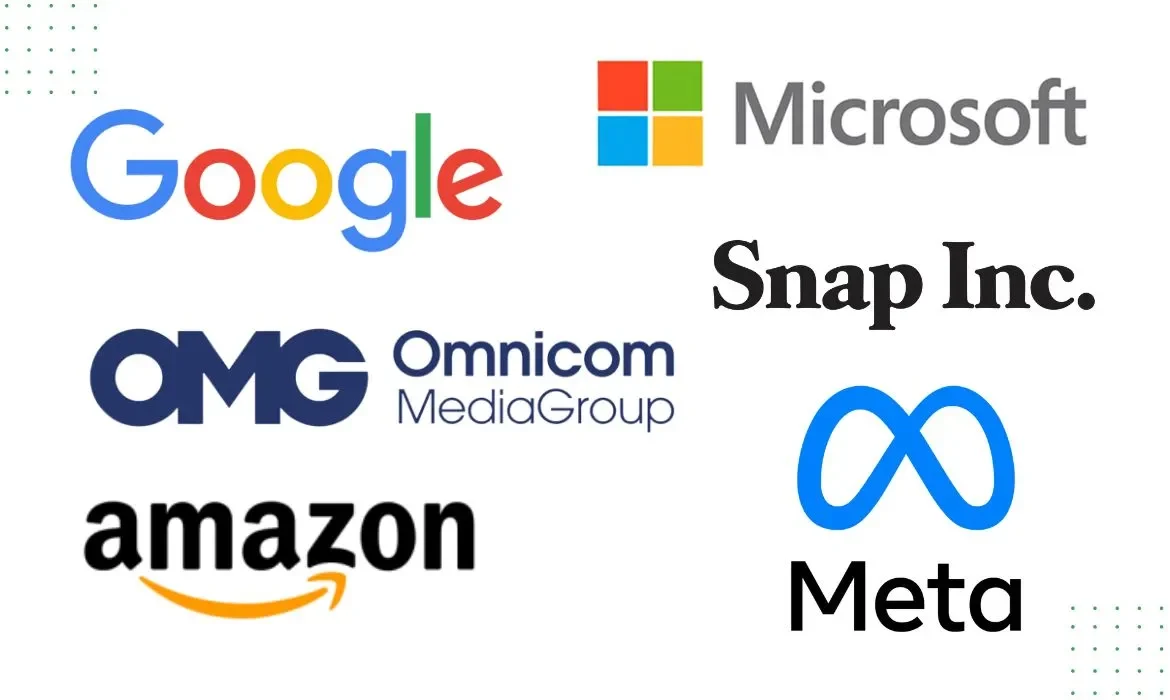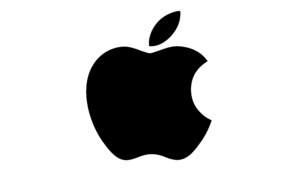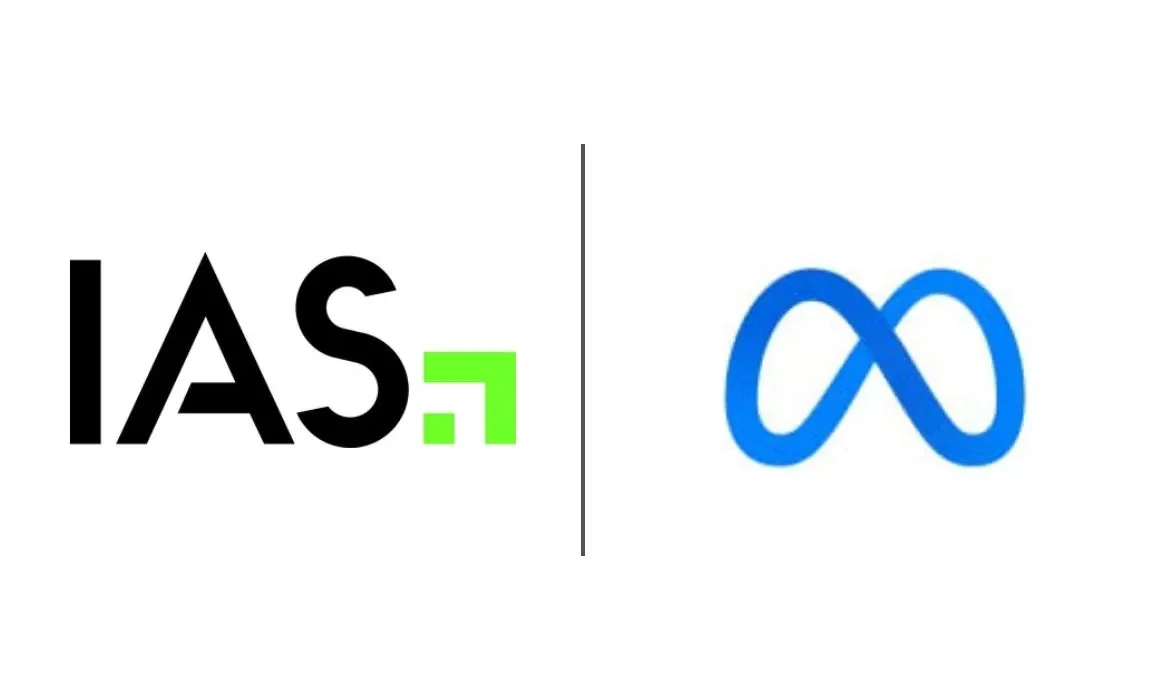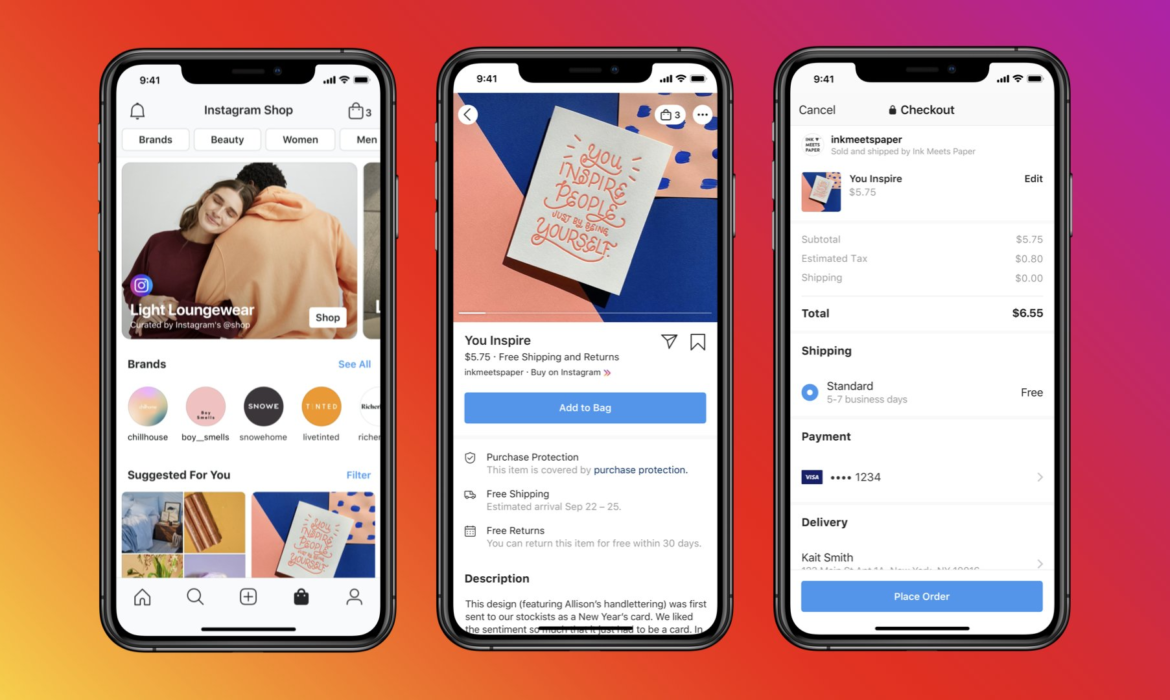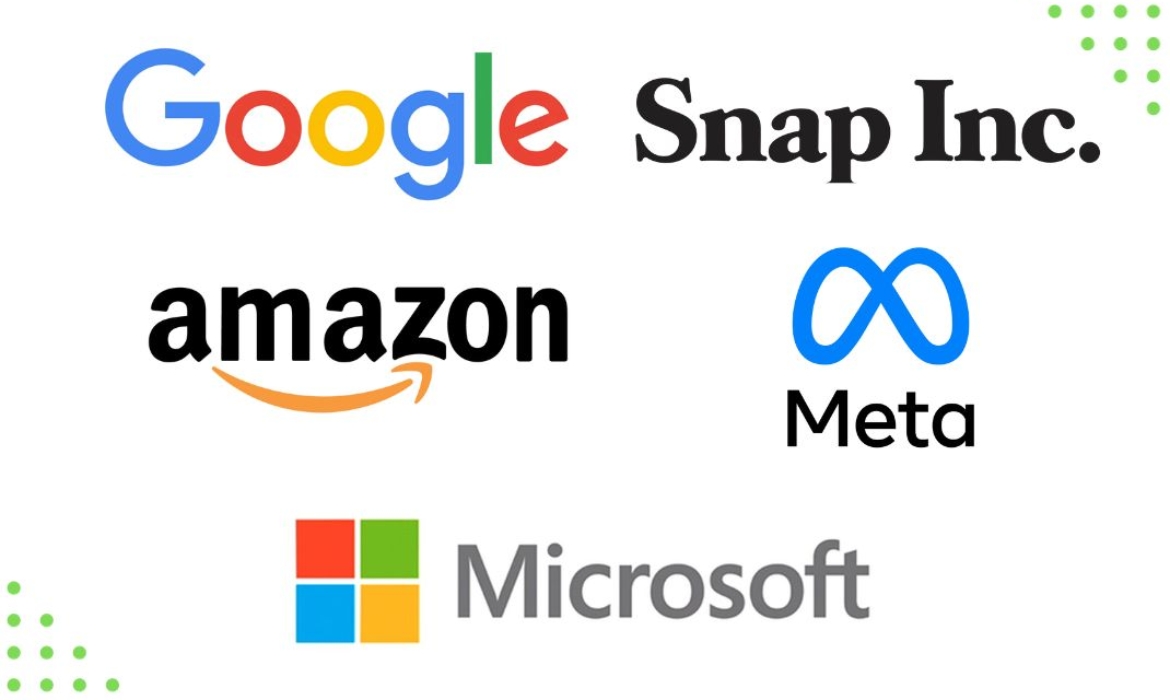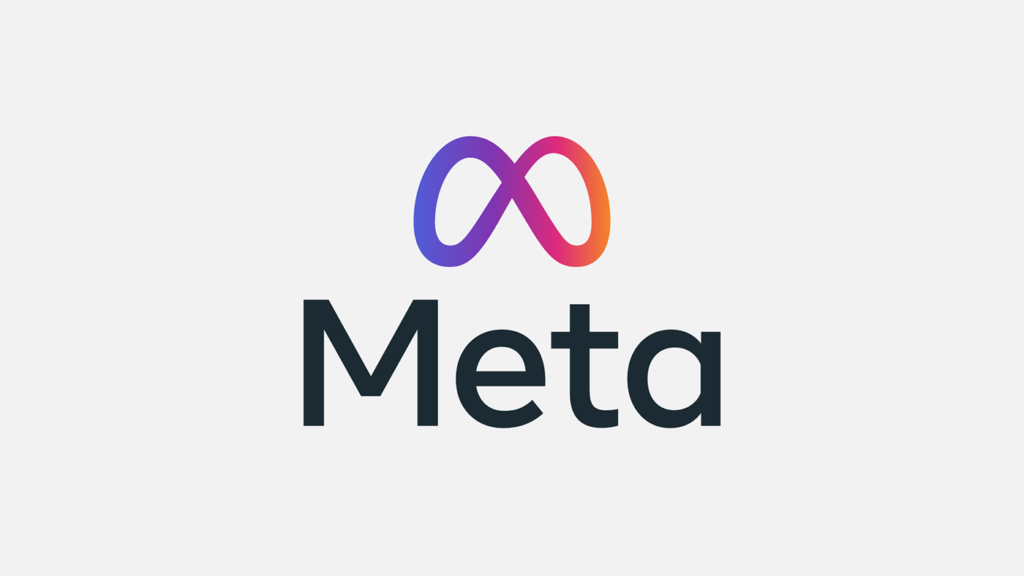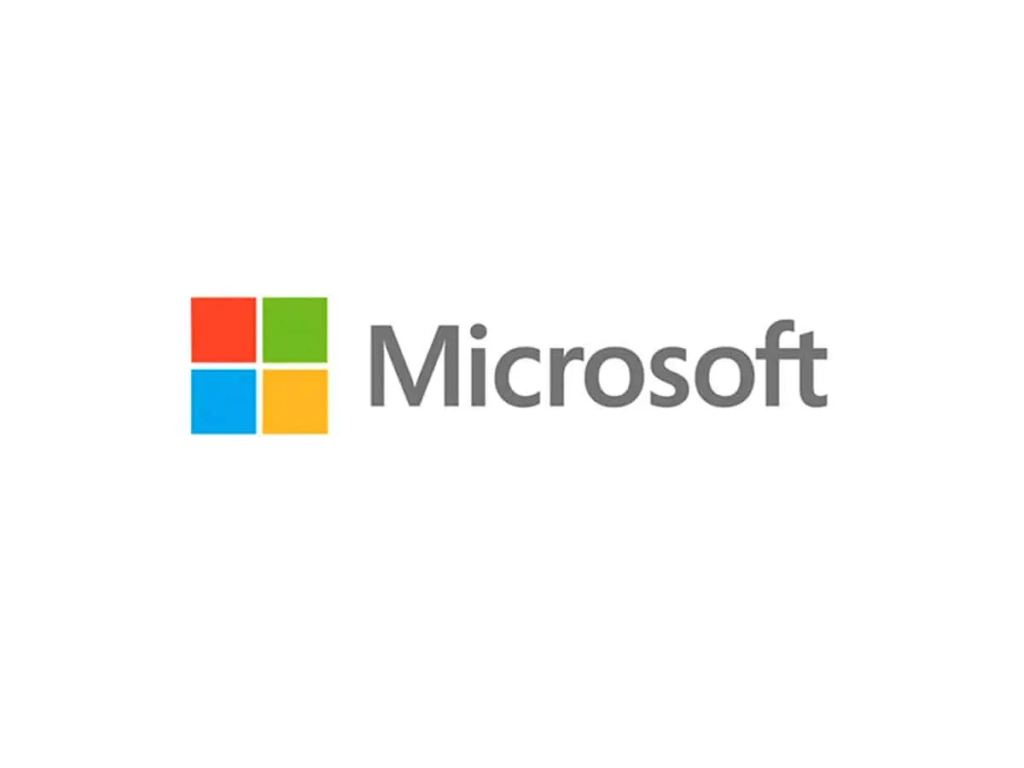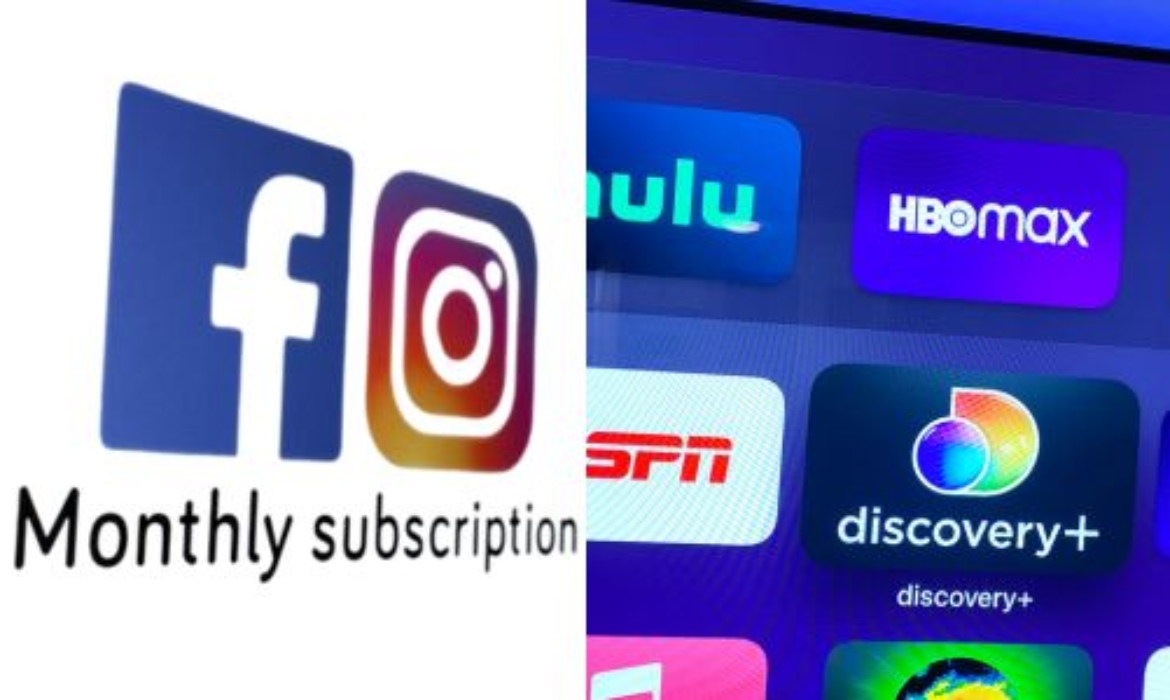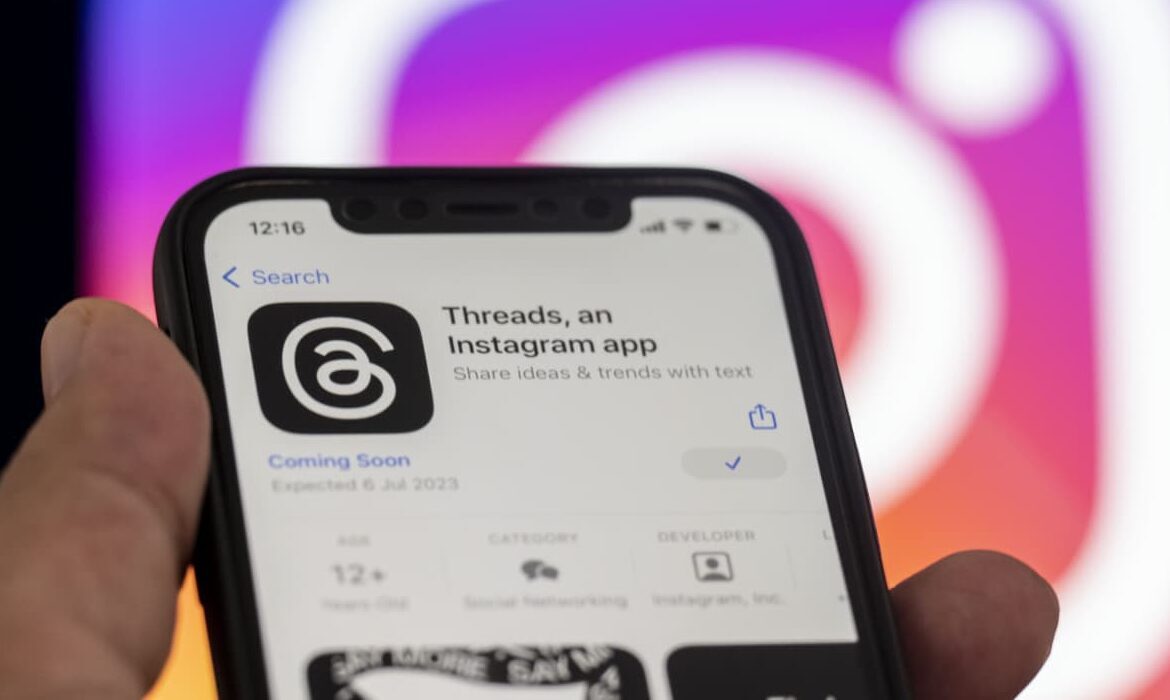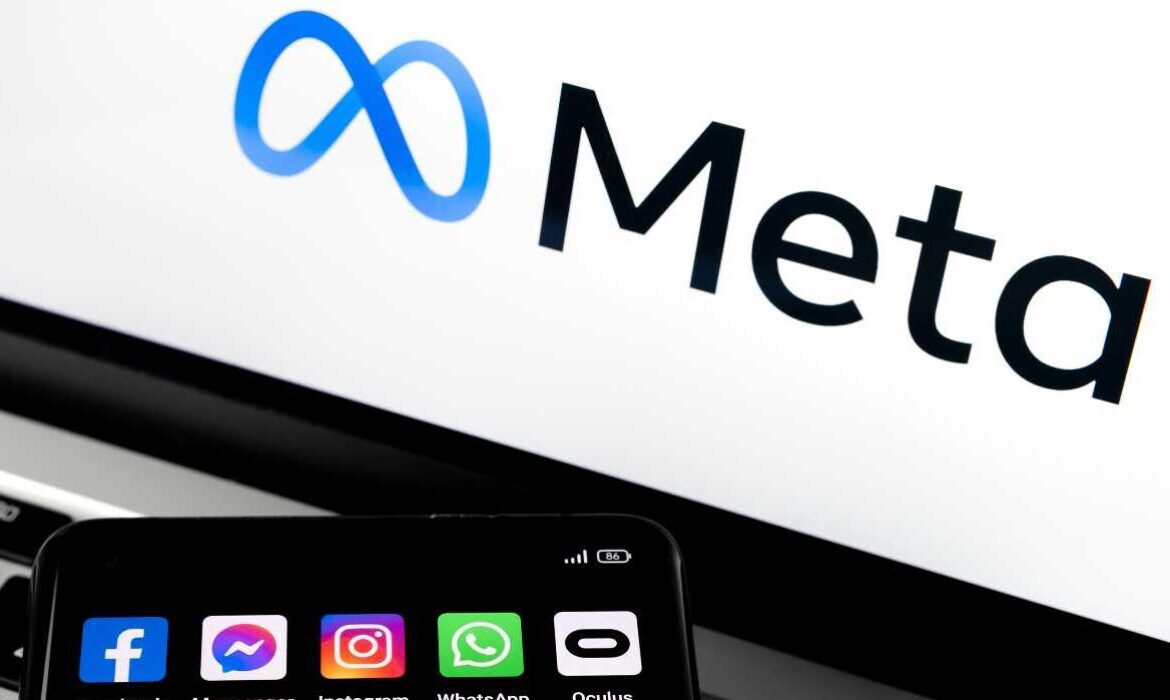Deciphering Big Tech Giants’ Quarterly Results: Here’s What They Say!
The Big Techs recently disclosed their fourth-quarter results. For those who are interested in the industry, these are a few key findings and insights from the quarterly reports.
![]()
ALPHABET
Alphabet Inc., the parent company of Google, exceeded Wall Street forecasts with its fourth-quarterly earnings report. Ad sales, however, failed to expand quickly enough to keep up with experts’ predictions. YouTube, which has been contributing to increased growth, came up barely short of projections. With over 2 billion monthly users and an average of 70 billion views per day, YouTube Shorts continues to be a top priority for Google.
The cloud division, which was losing money for years while it attempted to compete with Microsoft Azure and Amazon Web Services, is where the company makes its money. Google Cloud continued to be a growth engine in the fourth quarter, expanding by 26%. The primary driver of revenue growth continues to be search. While brand and direct response advertising drove YouTube advertising, growth in retail was the main driver of Google Search and other forms of advertising revenue.
By the numbers
- Revenue reported was $86.31 billion, up 13.5%.
- Google Search and other advertising revenues rose to $48 billion, up 13% Yo-Y.
- Google cloud computing revenue was $9.19 billion up 26% Yo-Y.
- Advertising revenues reported were $65.52.
- YouTube advertising reported $9.2 billion, up 16% Yo-Y.
- Network advertising revenue was $8.3 billion, down 2%.
- Traffic acquisition costs were $13.9 billion.
Google is beginning to provide generative AI to an increasing number of companies to assist them in creating more effective campaigns and advertisements. Google unveiled Gemini, a large language model that it claims to be its most powerful AI model, in December. The business intends to license Gemini to users via Google Cloud so they can utilize it in their apps. Additionally, Google plans to test the usage of Gemini in Search, where it will speed up consumers’ Search Generative Experience (SGE).
Sundar Pichai, CEO, said in the conference call,
We are pleased with the ongoing strength in Search and the growing contribution from YouTube and Cloud. Each of these is already benefiting from our AI investments and innovation. As we enter the Gemini era, the best is yet to come.
Ruth Porat, President and Chief Investment Officer, CFO said,
We ended 2023 with very strong fourth quarter financial results, with Q4 consolidated revenues of $86 billion, up 13% year over year. We remain committed to our work to durably re-engineer our cost base as we invest to support our growth opportunities.
Read More: Google Integrates Gemini AI Into Search Ads Platform
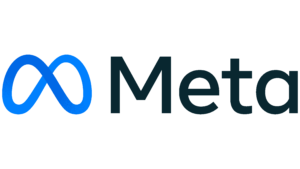
META
Meta exceeded Wall Street expectations and had a positive fourth quarter. The positive outcomes show that digital advertising has recovered well from its 2022 decline. It was a significant year for both the business and the community. According to Meta’s estimation, over 3.1 billion individuals use at least one of the Meta applications daily. The already enormous social media company keeps on adding new users across all platforms.
Overall, Meta’s Q4 revenue increased by 25% over the previous year. Threads, the business’s Twitter-like social app that launched in July 2023, now has over 130 million monthly active users, according to the company. As is usual, almost all of Meta’s revenue came from sales of digital advertising. Chinese retailers have increased their spending to reach customers worldwide, which has contributed to Meta’s financial turnaround during the past year. They have been heavily investing in Facebook and Instagram ads.
By the numbers
- Revenue was $40.11 billion, an increase of 25% Yo-Y, and $134.90 billion, an increase of 16% Yo-Y for the full year.
- Facebook DAUs were 2.11 billion on average, an increase of 6% Yo-Y.
- Facebook MAUs were 3.07 billion, an increase of 3% Yo-Y.
- Family DAPs were 3.19 billion on average, an increase of 8% Yo-Y.
- Family MAPs were 3.98 billion, an increase of 6% Yo-Y.
- Ad Impressions delivered across all Meta apps increased by 21% Y-o-Y and the average price per ad increased by 2% Yo-Y.
Strong sales of the company’s Quest device during the holiday season drove record sales of $1.1 billion for the metaverse-focused Reality Labs division. Additionally, Zuckerberg stated that the ad business, which is expanding more quickly than Google, has benefited from advancements in artificial intelligence. By the end of the year, Meta plans to completely launch Meta AI assistant and further AI chat experiences in the United States using generative AI.
Meta Chief Executive Mark Zuckerberg said in a news release,
We had a good quarter as our community and business continue to grow. We’ve made a lot of progress on our vision for advancing AI and the metaverse.
Susan Li, CFO, stated that Meta’s big areas of focus in 2024 will be working towards the launch of Llama 3, expanding the usefulness of Meta AI assistant, and progressing on our AI studio roadmap to make it easier for anyone to create an AI.
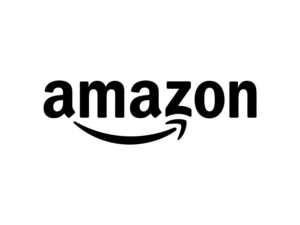
AMAZON
For the fourth quarter of 2023, Amazon reported better-than-expected revenues, exceeding sales forecasts thanks to new generative AI capabilities in its cloud and e-commerce businesses, which drove strong growth throughout the Christmas season. The e-commerce behemoth had a great holiday season. Over 1 billion items were bought on the site in the course of the company’s 11-day Black Friday and Cyber Monday sales. Additionally, the events helped bring in new Prime members and save consumers billions of dollars.
With 26% Yo-Y growth in worldwide advertising, Amazon had a great result. Because machine learning has improved ad relevancy, sponsored products have been the main driver of advertising strength. The shift in customer attention towards encouraging innovation and introducing new workloads to the cloud was attributed to the increase in AWS revenues.
By the numbers
- Revenue was reported at $169.9 billion versus expectations of $166.2 billion, up 13.9% Yo-Y.
- AWS Revenue 13% increase in sales over the prior year to a total of $24.4 billion.
- Advertising sales of $14.7 billion.
- Subscription services were up 13%, reporting $10.4 billion in revenue.
Amazon has launched Rufus, a new AI shopping assistant trained in Amazon’s product catalog and other web-based information. The tool, driven by generative AI, may provide product recommendations and respond to queries from users of the Amazon mobile app. The corporation believes that advancements in AI might bring in tens of billions of dollars for its cloud computing division.
Chief Executive Andy Jassy said in Amazon’s press release
This Q4 was a record-breaking holiday shopping season and closed out a robust 2023 for Amazon. While we made meaningful revenue, operating income, and free cash flow progress, what we’re most pleased with is the continued invention and customer experience improvements across our businesses.
Amazon’s Chief Financial Officer Brian Olsavsky added,
We’re coming off a period where we’ve done a lot of hiring. There’s a general feeling in most teams that we’re trying to hold the line on headcount.
Read More: Amazon and Reach Partner for Targeted Ads Ahead of Third-Party Cookie Phase-Out
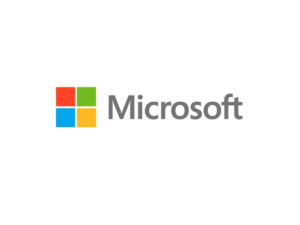
MICROSOFT
Microsoft had a record-breaking quarter, mostly due to Microsoft Cloud’s ongoing growth. Strong executions in the commercial areas and device advancements were credited for the anticipated growth in its quarterly results. The robust demand for Microsoft Cloud offerings, particularly AI services, led to enhancements in Azure, which in turn drove revenue growth.
On October 13, 2023, Microsoft completed the acquisition of Activision Blizzard. With the acquisition, the business expanded its player base by hundreds of millions. It broke previous records for MAUs on Xbox, PC, and mobile devices with over 200 million MAUs in a single month. The business has been integrating AI into every aspect of the IT stack, bringing in new clients and fostering increased efficiency. Additionally, the business reported increased revenue from Windows OEM sales and improved performance in consumer markets.
By the numbers
- Revenue recorded was $62.0 billion, an increase of 18%.
- Intelligent Cloud unit $25.9 billion, increasing 20% ahead of expectations.
- Azure revenues increased by 30%.
- LinkedIn’s revenues increased by 9%.
- Microsoft Cloud Revenue was $33 billion, up 24%.
- Search and news advertising revenue excluding traffic acquisition costs increased by 7%
AI is helping to drive revenue in the Azure consumption business. Over the past year, Microsoft, Amazon, and Google have all invested billions of dollars in artificial intelligence (AI) in an attempt to overtake one another as the leading providers of AI software.
Satya Nadella, chairman and chief executive officer of Microsoft said,
We’ve moved from talking about AI to applying AI at scale. By infusing AI across every layer of our tech stack, we’re winning new customers and helping drive new benefits and productivity gains across every sector.
Amy Hood, Chief Financial Officer added,
While it’s early days for Microsoft 365 Copilot, we’re excited about the adoption to date and continue to expect revenue to grow over time.
Read More: Vodafone and Microsoft Sign 10-year Strategic Partnership for IoT, Cloud, AI and More
APPLE
In its first-quarterly report, Apple exceeded analysts’ projections for both revenue and profits, but it revealed a 13% drop in sales in China, one of its most significant regions. The tech giant surpassed 2.2 billion active devices, setting a new milestone for its installed base. Apple attributes this to extremely high levels of customer satisfaction and unmatched customer loyalty.
According to projections, Mac sales increased by less than 1% throughout the quarter. Nonetheless, this is a noteworthy comeback for the product line, which had an annual decline of about 34% in the September quarter. iPad sales are still declining. For the first time in iPad history, Apple did not introduce a new model in 2023.
By the numbers
- Revenue was $119.6 billion, up 2% Yo-Y.
- iPhone Revenue was $69.70 billion 6% up.
- Mac $7.78 billion 1% up Yo-Y.
- iPad $7.02 billion down 25% Yo-Y.
- Wearables, home, and accessories revenue was $11.95 billion, down 11%.
- Service Revenues $23.13 billion up 11% Yo-Y
Additionally, Apple unveiled the Apple Vision Pro, their most sophisticated personal electronics gadget to date. Customers in the United States will be able to purchase it via Apple stores; later in the year, it will also be available in other countries. It is considered a groundbreaking gadget that is years ahead of anything else and is based on decades of Apple ingenuity. Additionally, the company announced that customers may select any Apple Watch model that is carbon neutral for the first time.
Tim Cook, Apple’s CEO said in the conference call,
Today Apple is reporting revenue growth for the December quarter fueled by iPhone sales, and an all-time revenue record in Services. We are pleased to announce that our installed base of active devices has now surpassed 2.2 billion, reaching an all-time high across all products and geographic segments. And as customers begin to experience the incredible Apple Vision Pro tomorrow, we are committed as ever to the pursuit of groundbreaking innovation — in line with our values and on behalf of our customers.
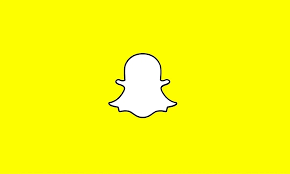
SNAP INC
Snap Inc. released a forecast that was slightly below Wall Street expectations. The company has now recorded six consecutive quarters of single-digit growth or revenue contraction. Snap Inc. struggled to recover from the downturn in the digital ad sector.
Snap Inc. has announced a new publisher partnership with Spotify in the United States, which will bring short-form highlights from Spotify’s podcasts to Spotlight and Stories. Additionally, the social media giant revealed new AI-powered tools for Snapchat+ users, enabling them to edit and share Snaps as well as create and send AI-generated images in response to text prompts.
By the numbers
- Revenue was $1,361 million, an increase of 5% Yo-Y.
- DAUs were 414 million, an increase of 39 million or 10% Yo-Y.
- MAUs increased 8% Yo-Y and surpassed 800 million in Q4.
- Subscriptions for Snapchat+ have reached over 7 million
Snapchat made a large investment in its augmented reality system. On average, almost 300 million Snapchat users use its augmented reality feature every day. Additionally, it has invested in automation and technology, used generative models, and optimized the ML Lens generation workflow.
Evan Spiegel, CEO said in the announcement,
2023 was a pivotal year for Snap, as we transformed our advertising business and continued to expand our global community, reaching 414 million daily active users. Snapchat enhances relationships with friends, family, and the world, and this unique value proposition has provided a strong foundation to build our business for long-term growth.

OMNICOM MEDIA GROUP
Omnicom exceeded analyst forecasts with impressive Q4 and full-year 2023 results. The growth in advertising and media during the quarter was driven once again by the performance of global media, with softer results from Omnicom’s advertising agencies serving as a partial offset.
Additionally, Omnicom completed the acquisition of Flywheel Digital, which will contribute to the introduction of scaled capabilities in the retail, media, and digital commerce sectors—the fastest-growing areas of the business. Furthermore, Omnicom disclosed that it has partnered with Getty Images as a first mover, giving them early access to a new generative artificial intelligence tool.
By the numbers
- Revenue reported increased $192.7 million or 5% organically, to $4,060.9 million.
- Advertising and media were up 9.3%.
- Public Relations was 2.9% down.
- Third-party service costs increased by $97.5 million or 12.4% to $884 million
Omnicom has reportedly spent tens of millions of dollars developing artificial intelligence over the past ten years, according to CEO John Wren. With the recent June 2023 launch of Omni Assist, a generative AI-powered virtual assistant that organizes, carries out, and produces advertising campaigns through cooperation with Microsoft, Omnicom became the first agency holding company to get access to the most recent Open AI GPT models.
John Wren, Chairman and Chief Executive Officer of Omnicom commented,
Omnicom finished 2023 with 4.4% organic revenue growth in the fourth quarter and 4.1% for the year. Looking out to full year 2024, we are set up well with solid fundamentals, tremendous opportunities in digital commerce and retail media from our Flywheel acquisition, and momentum in new business wins. Our accelerated investments in analytics and AI will enhance our ability to drive the best outcomes for our clients, while shareholders remain supported by our profitable operations and balanced deployment of capital through dividends, acquisitions, and share repurchases.
Read More: Decoding Big Tech Giants Quarterly Results: Insights Await!
IAS Announces AI-Powered Brand Safety and Suitability Expansion to Meta
Integral Ad Science, a leading global media measurement and optimization platform, has announced that its AI-powered Total Media Quality (TMQ) Brand Safety and Suitability Measurement product is now widely available on Facebook and Instagram Feeds and Reels. Advertisers may feel secure knowing that their media is showing up alongside content that is consistent with their brand’s objectives and values thanks to the availability of Brand Safety and Suitability Measurement for Meta on all Meta platforms.
IAS’s Brand Safety and Suitability Measurement
IAS’s collaboration with Meta to enhance post-bid brand safety and suitability measurement aims to give advertisers more information about where their campaigns are placed concerning appropriate and safe content. Advertisers have access to:
AI-powered categorization
IAS uses multimedia technology to measure posts that are close to an advertiser’s campaign. By analyzing images, audio, and text frame-by-frame, it can provide the most accurate measurement possible at scale. This allows for unique insights into video content.
Transparency and trust
With their transparent and reliable industry metrics, the measurement framework is in line with the Global Alliance for Responsible Media (GARM), giving advertisers third-party validation.
Third-Party verification
Marketers can assess how well their Meta Inventory Filters are serving their campaign objectives and make necessary optimizations.
Read More: DoubleVerify Includes YouTube Shorts in its Brand Safety Measurement Expansion
IAS and Meta partnership
IAS Signal is a unified reporting platform that advertisers can use to get the information and understanding they need to manage their digital campaigns with ease. The collaboration between IAS and Meta started in 2016 when IAS introduced Facebook viewability verification. IAS increased the scope of its viewability reporting and measurement in 2017 to include Instagram, Facebook, and the Facebook Audience Network. IAS began providing Facebook with its brand suitability offering in 2019. It added viewability and invalid traffic (IVT) measurement for Facebook and Instagram Reels to its measuring repertoire in 2023.
Here’s what they said
Lisa Utzschneider, CEO, IAS said,
IAS is steadfast in delivering solutions to help marketers measure and optimise performance in dynamic, user-generated social environments like Facebook and Instagram. This expansion allows brands to identify higher-quality media and scale across these platforms, signifying another important milestone in helping brands enhance brand equity across the entire digital ecosystem.
Samantha Stetson, Vice President Client Council and Industry Trades at Meta commented,
IAS’s release of Brand Safety and Suitability Measurement across Facebook and Instagram is a meaningful step forward in our continued work to provide transparency and trust across our advertising ecosystem. Responsible marketing is a top priority at Meta – and we are pleased with our continued partnership to bring this important solution to our advertisers.
Karyn Johnson, Vice President of Digital Marketing at Verizon added,
One of the most important things for us as an advertiser is maintaining the gold standard of brand suitability, and IAS plays a key role in protecting our advertisements from being placed in environments where it’s not safe or doesn’t align to our company values. It’s great to see IAS implementing this additional third-party measurement so we can use their tools to ensure we can reach those objectives across all platforms.
Read More: Vevo and Publica by IAS Announce Partnership for CTV Ad Serving
Dentsu and Meta Partner for WhatsApp Business Customer Relationships Solution
Dentsu became the first global agency network solution provider for WhatsApp Business, after announcing a global partnership with Meta. For WhatsApp, the company’s encrypted messaging platform, Dentsu will supply customer relationship management solutions. First launching in the UK, the partnership adapts to the changing ways in which consumers interact with brands, allowing businesses to provide more customized services and build stronger relationships with customers. Users of WhatsApp Business will have access control over who can access their accounts, as well as analytics and optimization tools provided by Merkle, Dentsu’s customer experience management subsidiary.
Partnership for customer relationship management solutions
Dentsu and Meta have partnered to drive innovation and experimentation, resulting in significant improvements for their clients. The partnership is based on Dentsu’s three-way satisfaction in business, people, and society activities, or the Sanpo Yoshi principles. Every week, more than 200 million WhatsApp Business users use the platform to create hyper-personal, social, and conversational connections between brands and consumers. Dentsu’s clients will be able to further customize their customer engagement strategies to support their service, commerce, and loyalty experience journeys thanks to this innovative integration. With the help of its media, creative, customer, and data capabilities, Dentsu hopes to drive people-centered transformation and enable end-to-end business messaging solutions.
Read More: Dentsu India Appointed As BharatBenz’s Integrated Communication Partner
Dentsu’s Proprietary Web Platform
Dentsu has developed a proprietary web platform for customers to manage all access to their accounts, allowing for streamlined access to WhatsApp Business. Through its Merkle brand, Dentsu offers an end-to-end managed service that includes creation, analysis, and optimization. By providing seamless customer journeys across media, customer engagement, and service, Dentsu is enabling businesses to capitalize on the enormous engagement and conversion potential of this channel. Through the Meta family of apps, the partnership uses experience and recent developments in AI to jointly develop first-to-market media and brand activation products and solutions.
Here’s what they said
Angela Tangas, UK&I CEO at dentsu said,
Customer-brand communications are in the moment and increasingly conversational. It needs to be easy and brands that embrace conversational experiences will be well-positioned to thrive. Our relationship with Meta is focused on helping brands achieve deeper engagement and value with their current and prospective customers, a critical enabler for growth. Launching a WhatsApp conversational solution, builds on our commitment to creating seamless E2E experiences. This enables brands to establish stronger, more relevant, one-on-one connections with customers, fostering trust and enhancing service experiences in the process.
Derya Matras, Meta VP of Northern Europe Middle East Africa added,
For people and businesses across the world, WhatsApp is a great place to get business done. We’re looking forward to seeing how dentsu brings the power of messaging to its customers around the world so they can accomplish more right within a chat.
Read More: Aalap Desai, Ex-CCO, Dentsu Creative India Launches TGTHR, a full-funnel ad agency
Meta and Amazon Collaborate for In-App Shopping in FB and IG
Amazon and Meta have partnered to make it easier to connect Facebook and Instagram accounts to Amazon. Customers will be able to purchase merchandise featured in their feeds without ever leaving the mobile app thanks to this. Interestingly, users can deliver goods to their chosen Amazon mailing addresses and complete transactions using their saved Amazon payment information. Only certain products that are promoted on Facebook or Instagram, either by Amazon directly or by independent sellers on Amazon’s storefront, are eligible for this in-app shopping feature. Meta can facilitate the process of allowing retailers to sell products on Facebook and Instagram without having to set up unique storefronts on those platforms by collaborating with Amazon.
The in-app shopping feature
This feature is referred to by the company as “Purchase with Amazon without leaving Facebook or Instagram.” A related support page has also been updated. India cannot currently access the page, but it is still accessible in the United States. The goal of this change is to prevent users from leaving their feeds while making purchases on Amazon, keeping them inside the app.
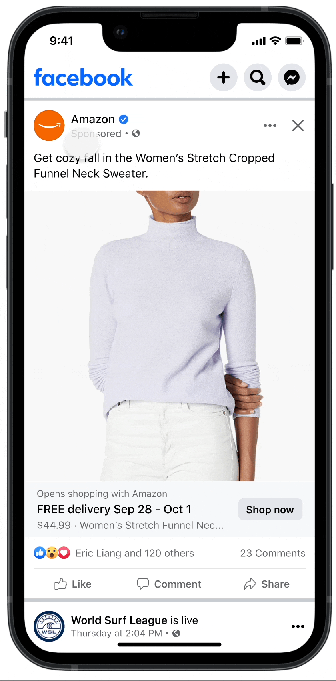
Image credit- TechCrunch
Users must complete a quick one-time setup in order to link their Amazon account to their Meta account (either Facebook or Instagram). Customers can easily make an Amazon purchase from the product ad after this is set up, without having to exit the Facebook or Instagram app. After that, the payment details and default shipping addresses that are saved on Amazon are used to finalize the sale.
Read More: Meta Contemplates Ad-Free Subscriptions, Targeting Indian Market
Benefits for advertiser
Users of Meta can now click on advertisements on Facebook or Instagram to visit a shop-like experience within the apps, making purchases simple and quick. Customers can make purchases using their linked Prime account without providing credit card information.
Improved ad signals: In order to boost customer investment, Meta receives more ad signals from the top online retailers and more attributed conversions.
Higher transaction fees: Due to its superior mobile discovery and ads engine, Amazon receives higher transaction fees than other retailers, which translates to more sales on its platform.
Increased conversions: With an extra sales channel and a 1:1 measurement between their most likely top ad platform and retail partner, merchants can increase the volume of conversions they generate.

Image credit- ITP Live
How will the in-app shopping feature help Meta and Amazon?
In an effort to increase ad revenue in the wake of Apple’s 2021 iOS privacy changes, Meta has decided to incorporate Amazon into its apps. It had an effect on both the digital ad market and Meta’s operations. However, the business recovered in 2023 following three quarters of declining revenue. According to Meta, the company’s investments in artificial intelligence have enabled it to attract retailers who are seeking to provide customers with personalized promotions.
Through their partnership, Meta and Amazon are able to profit from the benefits that each other offers. With its intent-based business strategy, Amazon can increase its market share. Moreover, it can assist retailers in attracting new clients who might not have actively looked for their goods. On the other hand, users can get targeted ads from Meta without having to actively search for them. This is thanks to its discovery-based business model. Data integration between the two platforms could be a crucial component of this. It includes Meta and Amazon sharing at least some insights that could better inform relative marketing strategies, ad performance, etc.
Amazon’s previous integrations
Amazon’s integration with Facebook and Instagram comes after a similar, mutually beneficial partnership between Pinterest and Amazon. Signed in April, the multiyear agreement between Pinterest and Amazon ads aims to increase the amount of shoppable content. Furthermore, it looks to improve the platforms’ selection of relevant brands and products. It also establishes Amazon as Pinterest’s first-party advertising partner. The collaboration may make it easier for customers to make purchases.
Here’s what they said
Amazon spokesperson, Callie Jernigan said
For the first time, customers will be able to shop Amazon’s Facebook and Instagram ads and check out with Amazon without leaving the social media apps. Customers in the U.S. will see real-time pricing, Prime eligibility, delivery estimates, and product details on select Amazon product ads on Facebook and Instagram as part of the new experience.
Read More: Meta Announces Five New Lead Generation, AI Powered Tools for FB, IG
Meta Announces Five New Lead Generation, AI Powered Tools for FB, IG
Throughout its family of apps, Meta is launching five new lead-generation advertising tools, AI-powered features, and CRM alliances. The goal of the tools is to improve consumer connections and campaign efficiency for marketers by generating high-quality leads on Facebook and Instagram. With its most recent feature rollout, Meta hopes to increase customer engagement, establish a connection with prospective buyers, and boost revenue by allowing users to initiate chats, fill out forms, and receive calls from businesses.
New AI-powered features of Meta
Because they are more likely to convert interest into actual sales, quality leads can save businesses both time and money. Marketers must use tools to optimize lead generation because of the increased conversion rate. By doing so, they can ensure more effective campaigns and maximize return on investment.
Click on Whatsapp Lead Generation
The lead objective feature, which is already present on Instagram Direct and Messenger, will now be available on Facebook and Instagram ads that click to initiate a WhatsApp conversation. In the future, certain advertisers will be able to add a Q&A flow in Ads Manager. Advertisers can now provide users with a coupon in exchange for answering the questions on Instagram Direct. The customer can then use the discounts on their subsequent goods or services.
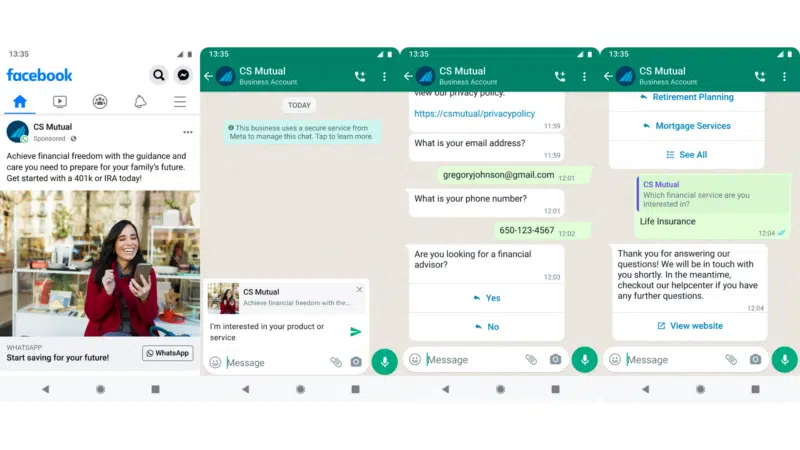
Image credit- Search Engine Land
Instant form ad format
For heightened visibility, Meta is launching an instantaneous advertising format designed to facilitate people’s simultaneous discovery and connection with multiple businesses. For instance, users can quickly share their contact details with other relevant businesses, such as nail salons, after registering for a bridal hair trial. It gives consumers greater convenience and increases the likelihood that potential clients will find small businesses.

Image credit- Search Engine Land
Read More: HubSpot Reaches Definitive Agreement to Acquire B2B Data Platform Clearbit
Contacting Facebook leads
Additionally, Meta is testing the capability for companies to make direct phone calls to potential customers via Facebook and Messenger, displaying the company’s name and logo on the incoming call screen so that potential customers can identify the caller.
Video Credit: Search Engine Land
Meta Advantage for Lead Generation
With the use of Meta Advantage machine learning technology, Meta is testing a feature that completely develops lead-generation campaigns for advertisers by automating targeting, creative, placement, and budget. Facebook is also testing automated instant form generation based on brand website content.
HubSpot
Meta has streamlined its CRM integration with Zapier and added HubSpot as its newest CRM partner in order to better serve the leads created by these new features. These kinds of integrations can improve campaign performance and assist companies in converting leads.
Read More: TikTok and HubSpot Partner for CRM Integration to Boost Lead Generation
Decoding Big Tech Giants Quarterly Results: Insights Await!
Big tech companies recently released their quarterly results for Q3 2023. Here are some key insights for industry enthusiasts.
ALPHABET
Alphabet, the parent company of Google, released third-quarter earnings that were above analyst projections. The business was satisfied with the quarterly results. The tech giant credited Cloud, YouTube, and Search for the overall boost. Out of all three, Search continued to be the key driver of their revenue expansion. However, Google’s Cloud business division failed to meet its revenue projections. Since Q1 of 2021, this has been the slowest documented growth in the Cloud business.
Because of this, Alphabet keeps investing in the cloud industry, which is growing in significance as generative AI emerges. YouTube’s advertising income exceeded experts’ forecasts thanks to increases in direct response and brand awareness. This is attributed to Shorts, the TikTok competitor of YouTube with 70 billion views every day.
By the numbers
- Revenue reported was $79.69B, up 11%.
- Google Search and other advertising revenues were $44B, a rise of 11% Y-O-Y.
- Google Cloud computing revenue rose 22% to $8.41B against estimates of $8.64B.
- Advertising revenue was up 9% to $59.6B as against an estimated $59.1B.
- YouTube advertising revenue reported $8B, up 12% Y-O-Y.
- Network advertising revenue was down 3% to $7.7B.
- Traffic acquisition costs were up $12.64B vs estimates of $12.63B.
- Search ad revenue was up 18%.
Google disclosed its quarterly results in the middle of its antitrust lawsuit. Government authorities claim Alphabet uses unlawful monopolistic methods to maintain control over its search engine. Additionally, it’s predicted that more advertisers will spend money on Google advertisements, which could lead to increased rivalry among them. In addition, Google keeps funding its attempts to develop Generative AI in an attempt to overtake its rivals.
Sundar Pichai, CEO of Alphabet, said in the earnings call,
I’m pleased with our financial results and our product momentum this quarter, with AI-driven innovations across Search, YouTube, Cloud, our Pixel devices, and more. We’re continuing to focus on making AI more helpful for everyone; there’s exciting progress and lots more to come.
Ruth Porat, President and Chief Investment Officer; CFO said,
The fundamental strength of our business was apparent again in Q3, with $77 billion in revenue, up 11% year over year, driven by meaningful growth in Search and YouTube, and momentum in Cloud. We continue to focus on judicious capital allocation to deliver sustainable financial value.
META
In terms of earnings and revenue, Meta exceeded the third-quarterly results. This was attributed to the increase in digital advertising spending. Exceeding expectations, the results showed the fastest growth rate, with revenues rising by 23%. Additionally, the company’s user base has grown in the face of fierce competition from rivals such as TikTok.
As its clients recover from a challenging 2022, Meta is witnessing faster growth in its core digital ads businesses. Right now, Meta’s business is doing better than its rivals. Its recovery can be largely traced to increasing the impact of its online ads. Additionally, Meta has cited its significant investments in AI as a crucial technological advancement that has enabled it to attract businesses seeking to serve clients with tailored incentives.
By the numbers
- Revenue rose 23% to $34.15B.
- Facebook DAUs were 2.09 billion on average, a 5% increase Y-O-Y.
- Facebook MAUs were 3.05 billion, an increase of 3% Y-O-Y.
- Family Daily Active People (DAP) was 3.14 billion on average, up 7% Y-O-Y.
- Family Monthly Active People (MAP) was 3.96 billion, higher by 7% Y-O-Y.
- Ad impressions across all Meta apps increased 31% Yo-Y and the average price per ad was down 6%.
Meta anticipates its spending in 2024 will exceed that as it continues to invest in AI infrastructure. Meta expressed a distaste for falling behind in the race towards generative artificial intelligence. To boost engagement, the internet giant intends to roll out AI-powered avatars on Facebook and Instagram. Users may be able to engage with the platform in new ways, receive recommendations, and do more with these identities.
Susan Li, Meta’s Chief Financial Officer stated that for Reality Labs, Meta’s augmented reality and virtual reality division, the company expects operating losses to increase meaningfully Yo-Y due to its ongoing product development efforts and investments to further scale the ecosystem.
Mark Zuckerberg, Meta founder and CEO said in the announcement,
We had a good quarter for our community and business. I’m proud of the work our teams have done to advance AI and mixed reality with the launch of Quest 3, Ray-Ban Meta smart glasses, and our AI studio.
MICROSOFT
Microsoft released the first quarterly results of its 2024 financial reports, and the company was off to a great start to the fiscal year. The favorable outcomes were ascribed to Microsoft Cloud’s strength, which outperformed analyst predictions. Microsoft completed its $68.7 billion acquisition of Activision Blizzard, a publisher of video games, earlier this month.
Microsoft claims to have the greatest AI infrastructure and the widest cloud footprint. Furthermore, compared to other cloud providers, it has more regions where AI services are installed. Furthermore, while search income growth was still influenced by third-party agreements, the rise in search and news advertising revenue was linked to higher interaction on Bing and Edge.
By the numbers
- Revenue recorded $56.5, higher by 13%.
- Microsoft’s Intelligent Cloud Unit revenues were $24.3, up 19% beating estimates of $23.4B.
- Azure revenues rose 29% against an estimated 26.2%.
- LinkedIn’s revenue increased by 8%.
- Microsoft Cloud Revenue was $31.8B, up 24%.
Microsoft is still dedicated to making investments in the cloud and AI potential. In order to increase consumer productivity, it is concentrating on quickly integrating AI into all facets of its technological and business processes. In addition, it will maintain strong growth in the upcoming year thanks to its leadership in the commercial cloud and AI platform wave.
Satya Nadella, CEO of Microsoft said,
With copilots, we are making the age of AI real for people and businesses everywhere, we are rapidly infusing AI across every layer of the tech stack and for every role and business process to drive productivity gains for our customers.
Amy Hood, Chief Financial Officer, Microsoft, commented,
We saw healthy renewals, particularly in Microsoft 365 E5, and the growth of new business continued to be moderate for standalone products sold outside the Microsoft 365 suite. In Azure, as expected, the optimization trends were similar to Q4. Higher-than-expected AI consumption contributed to revenue growth in Azure.
Read More: Delve Into What the Quarterly Results For Big Tech Titans Are Saying

AMAZON
Amazon outperformed analysts’ expectations and exceeded its own projections for the third quarter. Growing online sales in its retail section and significant cost reductions drove growth. Additionally, a notable increase in advertising revenue and growth in its cloud business, which kept stabilizing, were its main drivers. According to Amazon, the increase in AWS revenues of over $900M was offset by customers’ shifting focus towards fostering innovation and delivering new workloads to the cloud.
Amazon is still concentrating on buyer behavior and customer happiness. Thanks to the Prime Day event, when over 375 million goods were purchased globally by Prime members, Q3 revenues increased 11% YoY. The company’s introduction of generative AI capabilities into its products and services compensated for the decline in advertising revenue. Demand for daily necessities in areas like health, beauty, and personal care has remained high on Amazon.
By the number
- Revenue posted $143.1B, up 11% Yo-Y vs analysts’ expectations of $141.41B.
- AWS revenue was $23.1B, higher by 12% Yo-Y.
- Advertising sales jumped to $12B, rising 26%.
In addition to warehouse robots, which were already a prominent business for the corporation, Amazon continues to make large investments in generative AI. Further, AWS and Anthropic, Amazon’s generative AI, will work together on future advancements in AWS Trainium and AWS Inferentia chip technology, according to CEO Andy Jassy of Amazon. He thinks that the partnership will support the ongoing acceleration of the benefits to customers in terms of pricing and performance.
Amazon chief executive Andy Jassy said,
We had a strong third quarter as our cost to serve and speed of delivery in our Stores business took another step forward.
Brian Olsavsky, Amazon’s Chief Financial Officer added,
We’re ready to make this a great holiday season for customers. Overall, consumers have shown resilience in their spending despite rising interest rates and stubbornly high inflation that has steadily eased since last year. Amazon said Thursday its retail business grew by 6% during the third quarter. It was boosted by the company’s popular Prime Day sales event held in July. It’s also seeing strong customer demand across categories like beauty, health, and personal care items. But we still see customers being cautious about price, trading down where they can and seeking out deals.
He further added that as Amazon enters the holiday season, its operations network and inventory are in the optimal position like never before.
SNAP INC.
Snap INC. reported the third-quarterly results of 2023 and numbers that were better than anticipated by Wall Street. Its ad platform enhancements were the cause of the improvement in outcomes. For quite some time, Snap’s company has been in turmoil. This is because of TikTok’s rivalry, Apple’s modifications to iOS’s ad tracking, and a number of other issues. It was encouraging to see sales rise again. Moreover, Snap improved the ML ranking and optimization for the web, app, and Dynamic Product Ad (DPA) platform by implementing over 17 significant changes.
By the numbers
- Revenue posted $1,19B, up 5% from estimates of $1.11 B.
- DAUs 406 million, high 12% (43 million) Yo-Y.
- Snapchat+ reached more than 5 million subscribers.
By concentrating on investing in ML models to enhance content ranking and personalization across all content offerings, Snapchat is aiming to increase the depth of engagement with its content. Additionally, it will keep utilizing AI technology to provide the community with new services and goods. In addition, the business declared that over 200 million users have sent over 20 billion messages on My AI since its debut.
Evan Spiegel, CEO of Snap INC. said in the earnings call,
Our revenue returned to positive growth in Q3, increasing 5% year-over-year and flowing through to positive adjusted EBITDA as our reprioritized cost structure demonstrated the leverage in our business model. We are focused on improving our advertising platform to drive higher return on investment for our advertising partners, and we have evolved our go-to-market efforts to better serve our partners and drive customer success.
OMNICOM MEDIA GROUP
Beyond estimates, Omnicom revealed remarkable revenue growth in the 2023 third quarterly results. With consistent growth in media, advertising, and precision marketing, the business is still on track for the entire year. The outcomes follow significant recent victories, like the $600 million Uber media contract, which was transferred from competitor WPP to Omnicom Media Group in September.
With the release of Omni Assist, Omnicom’s customized version of ChatGPT that improves every task with Omni, it continues to develop its Generative AI capabilities. In addition, it keeps evaluating how Generative AI will impact Omnicom’s operations throughout the entire company and plans ahead.
By the numbers
- Global revenue reported $3.58B, a high of 3.3% or $113.1M organically.
- Advertising and media posted a 6.1% growth to $1.9B.
- Public Relations was down 5.5% against 12.6% delivered in Q3 2022.
- Third-party service costs increased $90.6M or 15.4% to $678.6M organic growth.
Omnicom is confident that its clients will receive the greatest creative skills and capabilities from the newly established Omnicom Advertising Services.
John Wren, Chairman and Chief Executive Officer of Omnicom stated,
We are pleased with our strong organic revenue growth of 3.3%, with notable performances in our Advertising and media, Precision Marketing, and Healthcare disciplines. Our year-to-date organic growth of 4.0% remains in line with our full-year expectations, which reflects the resiliency of our business even in periods of economic uncertainty. Omnicom continued to post strong profitability and earnings growth in the quarter, and our recent business wins validate the benefits of our client strategy in this rapidly evolving marketplace. We are very well positioned for a recovery in business conditions, with a strong balance sheet and leading creativity in all of our service disciplines.
Read More: OMG’s Rudra Khanna on Navigating Marketing’s Dynamic Landscape
Meta Contemplates Ad-Free Subscriptions, Targeting Indian Market
Meta Platform, the corporate parent of social media behemoths Facebook, Instagram, and WhatsApp, is now debating the implementation of subscription programs internally. The company is thinking about launching an ad-free membership option for the Indian market by 2024 in the midst of this. The action follows Meta’s goal to monetize its platforms on a global scale. Following discussions of establishing a similar subscription structure in the European Union to comply with strict privacy requirements, it is a calculated strategic move. Although these debates are still in their early phases, the report suggests that this strategy may be adopted soon.
Global monetization strategy
According to the article, these internal deliberations have been held to examine global monetization methods for Meta, with an emphasis on India. The organization wants to abide by the just-passed Digital Personal Data Privacy (DPDP) Act. Meta is actively having a thorough discussion about how to best ensure that all data protection laws are followed. It is investigating the most efficient ways to launch a free-for-trial subscription service that complies with data standards. The source said a paid, ad-free membership option will start rolling out for Indian users in the middle or toward the end of 2024. Currently, the EU is testing the plan.
Read More: Meta to Offer Ad-Free Subscription Plans For European Users
Meta’s Compliance with Regulatory Changes in the EU
In the EU, Meta attempted to roll out an ad-free membership service for Facebook and Instagram last week. Users have the option to not agree to the site using their personal information for targeted ads. Hence, they can opt for a $14 monthly subscription fee to use an ad-free version of Instagram on mobile devices.
In addition, Meta intends to start charging $17 per month for desktop versions of Facebook and Instagram. Notably, adding a subscription option signals a major change in Meta’s business plan. The internet giant recently changed how it makes money off its platform after receiving a heavy fine for violating EU privacy laws on the transfer of user-targeted ad data.
Here’s what they said
As reported by Mint, a Meta spokesperson said,
While the firm is striving to comply with the newly enacted Digital Personal Data Privacy (DPDP) Act, there will be intensified discussions on the optimal ways to ensure full compliance with data protection regulations. A pilot for a paid, ad-free subscription option for users in India, following a trial in the EU, is likely to be rolled out in mid- or late-2024.
Read More: Meta and Discovery+ Adjust Ad-Free Subscription Plans: Changes Ahead!
Meta and Discovery+ Adjust Ad-Free Subscription Plans: Changes Ahead!
Meta plans to charge its European customers $14 a month for access to Instagram and Facebook without advertisements. On the other side, Discovery+ is increasing the cost of its $9/month ad-free subscription tier.
Meta Charges $14 for Ad-Free Facebook and Instagram Access for EU Users
To overcome the strict new ad privacy regulations in the European Union, Meta has a new strategy. If people do not consent to the firm using their data for targeted advertisements, it is considering charging its European users approximately $14/month for an ad-free version of Instagram. Users who pay the subscription cost can utilize Meta’s services without being interrupted by advertisements. The laws as they currently stand prevent Meta from showing users targeted adverts without their permission, which is likely to hurt the company’s advertising revenue.
Price for ad-free membership
The plan is purportedly known as “subscription no ads” or SNA by the corporation. In the upcoming months, it plans to begin spreading it out. Regulators may request a more affordable solution if they don’t think Meta’s plan is an adequate workaround, which is currently up for debate.
Although several costs were explored, the £10 is the most practical and will be put into effect shortly. For desktop Facebook or Instagram accounts, the monthly cost would start at £10 ($10.5), but it would increase to about $14 for mobile accounts. This is made possible by the commission fees levied by the app stores of Apple and Google. The effort to comply with the EU’s prohibition on customized advertising through the new subscription tiers hurts Meta’s main source of income. If customers are given the option to choose between a free, ad-supported plan and a paid membership, they might choose the free plan. Additionally, it will assist Meta in adhering to rules without having an impact on its advertising business.
Read More: Meta to Offer Ad-Free Subscription Plans For European Users
Meta’s European dependence
Despite just making up 15% of Facebook’s overall daily active users, Europe provides almost a quarter of the company’s advertising revenue.
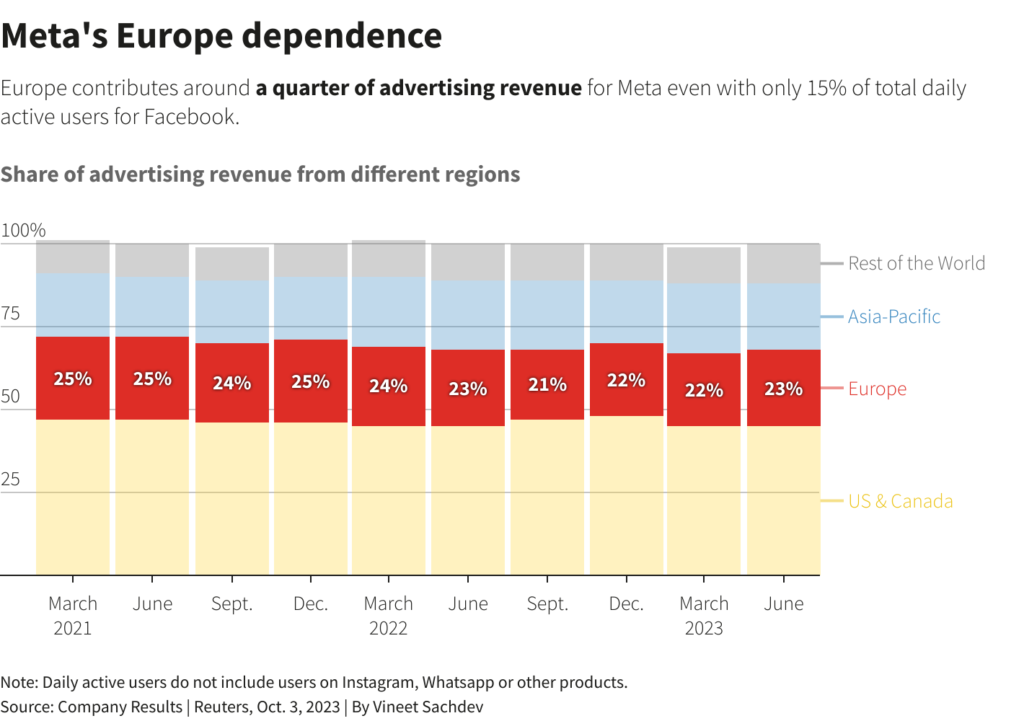
Image credit- Reuters
Meta under hot waters
Last year, the regulators of the EU declared that Meta had to provide users the choice to reject tailored adverts based on their usage of the platforms. The social network corporation was also told earlier this year that it could not use the so-called contract legal basis to send users adverts based on their online activities and was fined 390 million euros by Ireland’s Data Privacy Commission. Meta has discussed the idea with EU privacy regulators in Brussels, Irish privacy regulators, and other EU privacy regulators. The recommended subscription model may yet be altered because it’s unclear whether the new plan will be deemed compliant with EU rules by the EU regulators.
Although it is an essential component of Meta’s business strategy, the practice of showing advertisements based on user involvement has come under fire over the past several years. In 2021, Apple made it possible for customers to reject ad monitoring, a development that Meta said would cost the company $10 billion in lost revenue. The possible subscription tiers are the most recent example of how Europe’s strict regulatory framework is pressuring digital titans to alter their business models.
Read More: Amazon Prime Video to Introduce Limited Ads in 2024
Ad-Free Tier Implementation Outside EU
It is highly doubtful that Meta would introduce the SNA in the U.S. because the privacy restrictions do not apply there. However, in February, Meta CEO Mark Zuckerberg unveiled Meta Verified, a paid subscription service for verification. Users on Meta’s Facebook and Instagram platforms will be able to upload their government ID and receive a blue verification badge for $11.99/month on the web and $14.99/month on iOS. According to Zuckerberg, the new function seeks to improve platform security and authenticity.
Prices for Discovery+’s ad-free tier will increase
Warner Bros. Discovery’s independent streaming service, Discovery+, features both original content and well-liked programs from networks like HGTV and the Food Network. The recent mega-merger that gave rise to Warner Bros. Discovery (WBD) did not destroy the streaming service. After the debut of the merged Max service, it is still in operation. However, given that Discovery+ has recently disclosed a price rise, there are strong odds that users will switch.
Read More: TikTok Prioritize User Rights with Revised DSA Standards in the EU
Discovery+ Ad-Lite tier and its changes
The on-demand programming under the ad-lite option contains advertising. In the US, this subscription tier will not change. But, users may have to pay $9/month, up from $7/month if they want to get rid of adverts. The ad-free price will increase in Canada as well. It will change from CAD 7 to CAD 9. The ad-supported option, however, still costs $5 per month.
When will users see these changes?
Existing customers will see an increase on their next billing cycle, or on November 2, whichever comes first, according to the press email from Warner Bros. Discovery. The email also mentioned that since Discovery+’s inception in 2021, this is the first price hike that has been implemented in the United States and Canada. The media behemoth hasn’t yet disclosed how many customers Discovery+ has, though.
It appears that there is still some interest in a separate edition of Discovery+. It includes both newer and classic TV shows from Discovery’s network repertoire. Along with a slew of unique films and exclusive material, they include HGTV, Food Network, TLC, Travel Channel, Discovery Channel, etc.
Why is Discovery+ becoming more expensive?
The firm added that the price hike will enable it to continue offering can’t-miss tales in the cuisine, home, relationships, real crime, and paranormal areas. Other streaming services have raised their fees this year, including Disney+, Hulu, and Peacock. Warner Bros. Discovery intends to use a similar approach with Discovery+, its more specialized streaming service.
Read More: TikTok’s Double Delight: Creative Assistant and Ad-Free Subscription
Text-Search Comes to Threads, Tests Begin in New Zealand & Australia
Meta is testing a much-anticipated feature for Threads, the compact microblogging application. The biggest social networking platform is aiming to make it possible to text-search for posts. Threads didn’t arrive with several essential and expected features. Users are unfortunately restricted to account searches only. But it appears that will soon change, which means there will be more options to find posts.

Image credit- Threads
Read More: Meta to Offer Ad-Free Subscription Plans For European Users
An incomplete app with immense potential
One week was all it took for Threads to reach 100 million users. However, in the weeks that have subsequently passed, engagement has decreased, and there are currently an estimated 8 million DAUs. The company has been working to boost Threads engagement, which has decreased since the initial frenzy. Threads, Meta’s competitor on Twitter (or X), is currently limited in many ways. For instance, on Threads, users are unable to DM or update the alt text. Although hashtags are legally allowed in a Threads post, they are meaningless because they cannot be clicked on. There is no hot topic area on Threads.
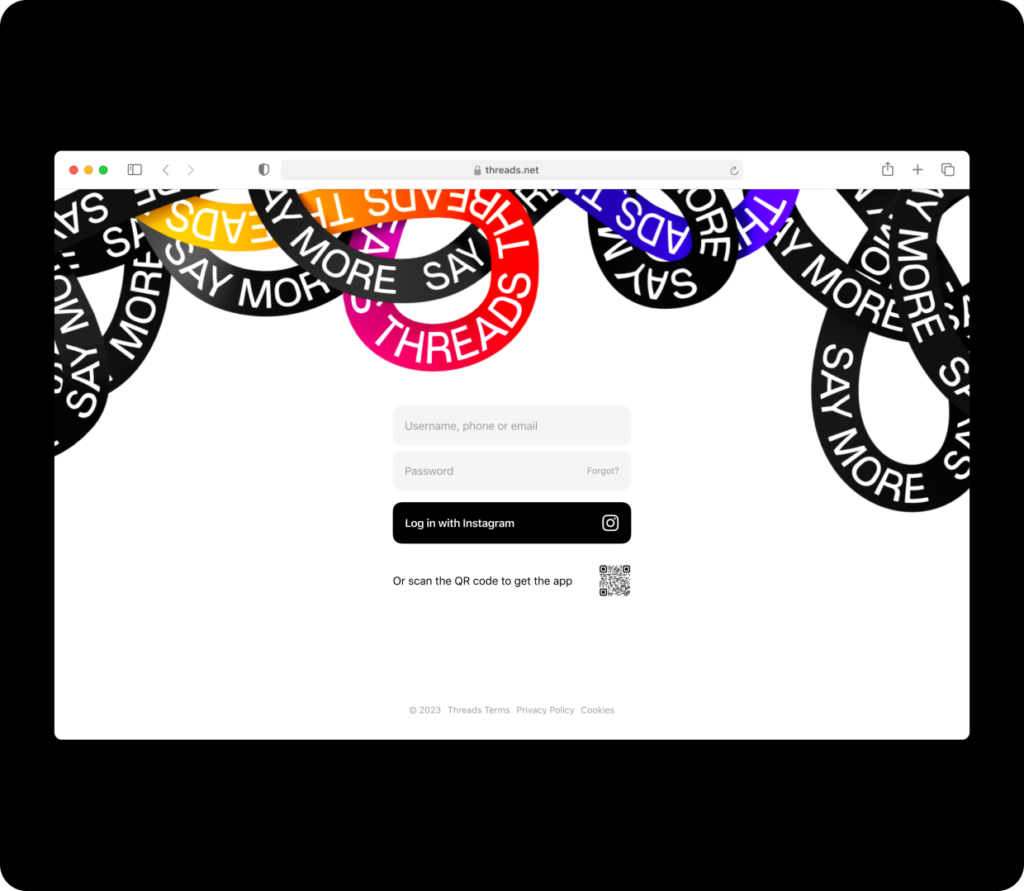
Threads Web Version. Image credit- Meta
But over the past few weeks, the business has quickly introduced some of the most in-demand services. Meta added a page where you may view likes and the following feeds, making the app remarkably user-friendly. A web version of Threads was just recently made available to users due to tremendous interest. By doing this, Meta gave users the option to post from a device other than their phone. It will be interesting to see if the web version of Threads and having real, helpful searches can stop the decreasing trend of Threads.

Threads Following Tab. Image credit- Meta
They also added the repost tab.
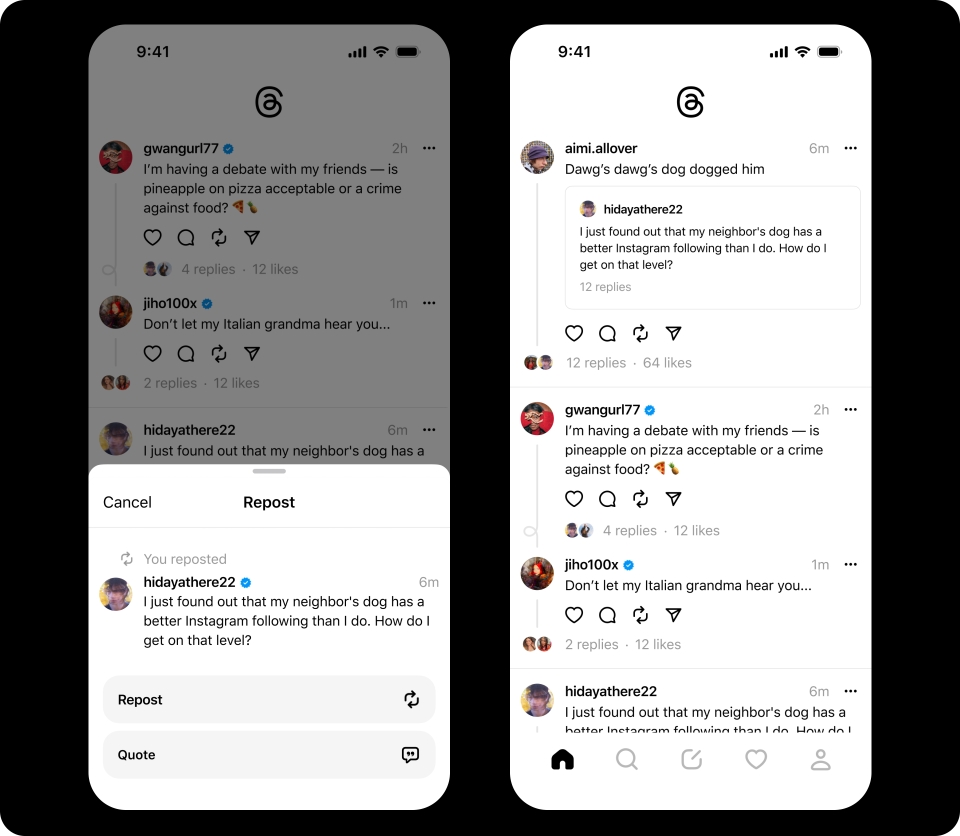
Threads Repost. Image credit- Mashable
Threads’ Text-Search
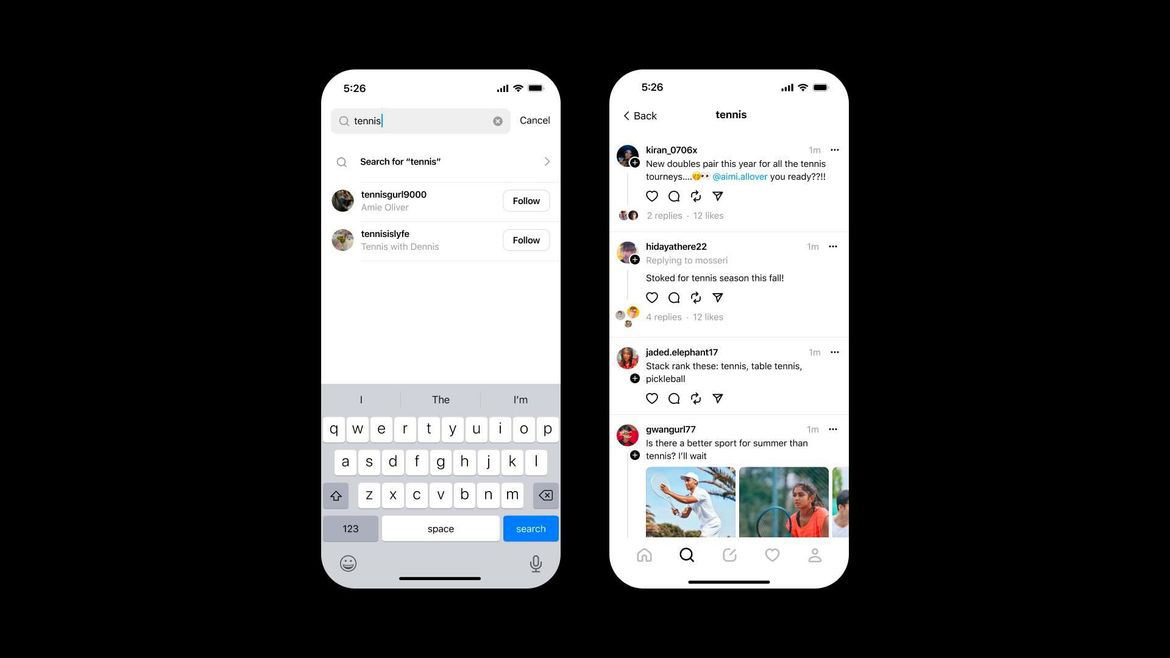
Threads Text-Search. Image credit- The Verge
Users can only currently search for usernames on Threads. The business is aiming to provide full text-search, though. In Australia and New Zealand, it has already begun testing this feature. It also has larger expansion ambitions in the works for additional English-speaking nations. When it will occur, though, is yet unknown. Users might not soon be able to utilize complex search capabilities or filters because this is an early version of the search engine. It’s noteworthy that Mastodon has begun rolling out a new version of the pop-up search bar search with easily accessible filters to hunt for posts with media or look for topics within a certain time window.

Mastodon. Image credit- Tech Crunch
Read More: Meta’s Horizon Worlds Expand to Mobile & Web Via Closed Beta Test
Meta to Offer Ad-Free Subscription Plans For European Users
Meta is thinking about releasing premium versions of Facebook and Instagram that would be ad-free for users in the European Union, according to The New York Times. These modifications are the result of ongoing regulatory review. It is evidence that, as a result of political decisions, the way Americans and Europeans view technology may diverge. In the European Union, Meta would keep providing free versions of Facebook and Instagram with ads. It is still unknown how much the apps’ commercial versions will be priced or when the company plans to release them.
Ads would not appear in the Facebook and Instagram apps for members. According to the New York Times, three individuals provided information on this matter while maintaining anonymity saying that the plans were classified. Providing customers with an alternative to the company’s ad-based services that depend on analyzing people’s data, may help Meta fight off privacy concerns and other criticism from EU regulators.
Read More: Meta Slams Apple Over ATT, Google Hit By Second U.K Anti Trust Investigation
Meta and the European Union
Offering users free social networking services and selling advertising space to businesses looking to reach their audience have been the two main focuses of Meta. The premium tier offering would go down as one of the most concrete cases to date of how businesses are being forced to rethink products. Furthermore, it would align with the changing data privacy laws and other governmental regulations, particularly in Europe. The EU and other European regulators have been at odds with Meta over alleged privacy breaches from its ad-tracking services and data transfers. In accordance with GDPR, Meta was fined $1.3 billion by Ireland’s Data Protection Commission for sending European users’ data to the United States. Recent data transfer agreements between the US and the EU have loosened limitations on social media sites.
The court for the European Union effectively forbade Meta from integrating user data gathered across its sites. It contained user-submitted data as well as information from Facebook, Instagram, and WhatsApp. Additionally, Irish regulators fined the corporation £390 million in January. They cited requiring users to consent to tailored adverts in order to use Facebook as the reason. In response, Meta has already started providing a way for users in the EU to opt out of receiving targeted advertising. Further, it was suggested that Meta would change it such that everyone in the area could opt-in.
Read More: Meta To Roll Out Web Version Of Threads, Granting User Requests
Meta’s commitment to EU expansion
The European Union is made up of 27 nations and about 450 million people. With the changing laws, regulations, and court decisions, consumers in the EU may start to witness distinct forms of consumer technology products. Meta has witnessed the willingness to develop paid memberships. The “Digital Markets Act,” another EU law focusing on advertising, will go into effect at the end of the year. According to Meta, allowing users to choose between using an ad-based service and accessing the paid versions of Facebook or Instagram could allay some of the worries of European regulators. Even if few users choose the paid version, offering it could benefit Meta’s interests in the area. Because of regulatory issues, Meta has yet to launch Threads, a competitor to X in Europe.
Future Outlook
Additionally, to overcome its difficulties in Europe, Meta is working to revive its operations. This comes after the worldwide economic unease slowed the expansion of its ad sales. Meta is currently focusing on the immersive virtual environment of the metaverse. Mark Zuckerberg, the company’s CEO is promoting the ambitious Metaverse project that is still in its infancy. The development of artificial intelligence technology and their integration into more Meta products are the executives’ main priorities. With this step, Meta is looking to empower its users with choice. The subscription plan is a significant move to strike the right balance between personalized experience and data privacy concerns in this evolving digital landscape.
Read More: Meta’s Horizon Worlds Expand to Mobile & Web Via Closed Beta Test

